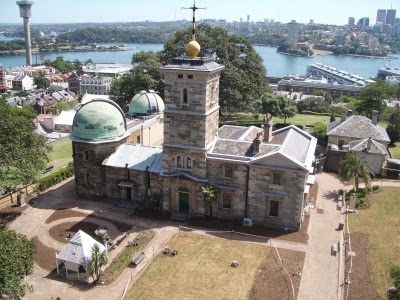The Heavens Declare His Glory
Guest post written by Patrick ChanRecently my wife Vivian and I went to the Sydney Observatory at night for our first wedding anniversary. It was a wonderful experience. We managed to learn a bit about astronomy, but we also had a real sense of the 'heavens declaring the glory of God'.
Today, the Sydney Observatory is in the middle of the city near the Rocks, where the First Fleet landed. However, it's set atop a hill so we could see the southern hemisphere's constellations - or at least some of them. Of course, we could see far more - and far more clearly - than if we happened to be in the Central Business District (CBD) or city centre or downtown of Sydney.
Nevertheless, the Sydney Observatory has not functioned as a research facility for several decades primarily due to its location which predisposes it to heavy light pollution. The city lights outshine the starry nights.
Perhaps because we both hadn't been out to simply stare and take in the skies at night in quite some time, we were taken aback by the sheer beauty of it all. Let alone when we peered through the observatory's telescopes and were able to observe celestial objects like the planet Venus and the Moon. And yet, we had to be warned by the astronomer not to expect Venus, for instance, to look anything near as lovely as a digital photograph, and to be reminded that the real privilege lay in seeing the real Venus with our naked eye as well as via a telescope.
 |
| Above: Image courtesy of Wiki Commons |
As I said, it was all a sight to behold, and it filled us with a sense of awe and humble praise to the Lord God who has "set his glory in the heavens," who, when we considered "the work of [his] fingers, the moon and the stars, which [he has] set in place," in turn echoed in our hearts, "what is man that you are mindful of him, and the son of man that you care for him?" (Ps 8).
Indeed, the moon and the stars serve as fixed points in the present night sky, rotating in concentric circles around the south pole in the music of the spheres, some dipping under the horizon only to rise again in full crescendo. But though they're 'fixed' points, they're not permanently fixed, for the heavenly vault looks different now than it did in days gone past, and distant generations in future millennia to come will see what Vincent Van Gogh or Caspar David Friedrich did not.
 | |
| Above: 'Starry Night Over the Rhone' Vincent van Gogh (courtesy Wiki Commons) |
What Viv and I saw left us with great reverence for God. I can only imagine what previous generations of Christians must have seen, and how it affected them, for I suppose most would not have been city dwellers accustomed to skies occupied by skyscrapers and silence pushed out by the constant hum and background noise. I doubt they would have had to work so hard to peer beyond the fog and daze to see the cosmos glittering with its splendid gems and crystals. Perhaps they had a different, 'better' weight of glory to bear.
Leave a comment
Comments will be approved before showing up.
Also in And Just in CASE
Powerful Words: The Key Role of Words in Care
The Powerful Words conference was held at New College on the 26th September. It was planned for chaplains and others interested in pastoral theology and care and was joint initiative of CASE and Anglicare. The conference was based very much on an understanding that Christian chaplaincy is a prayerful cross-cultural ministry that focuses on the needs of others. Chaplains meet people at times of...
The Bible's Story
The Bible has come a long way. In the latest issue of Case Quarterly which is published by CASE we look at the 'journey' that took place to arrive at the Bible as we know it today.
In the beginning was the Word, but it took a while for the hundreds of thousands of words in the Bible to be composed, written down, painstakingly copied, preserved, passed around, tested, accepted, collected together,...
In the beginning was the Word, but it took a while for the hundreds of thousands of words in the Bible to be composed, written down, painstakingly copied, preserved, passed around, tested, accepted, collected together,...



